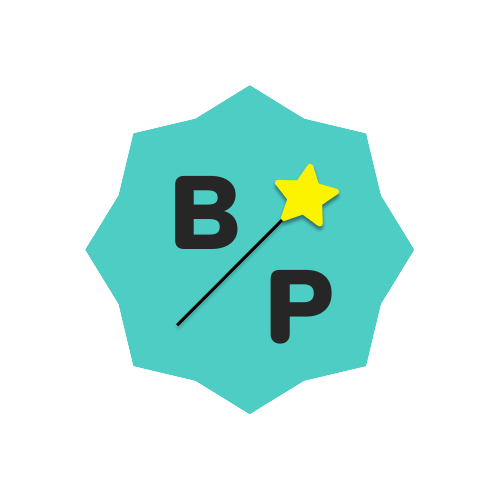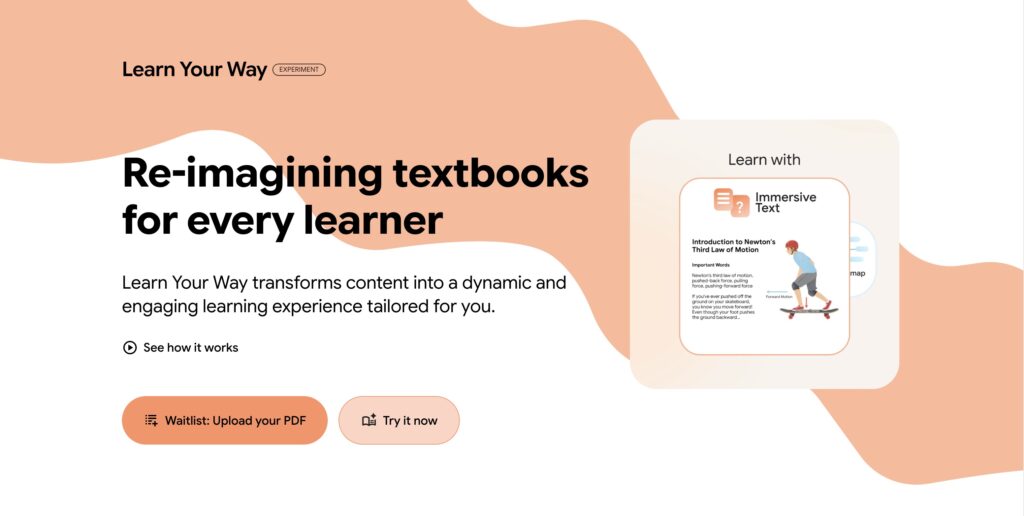
For years schools delivered knowledge the same way to everyone. Same textbook. Same examples. Same pace.
If you understood it. Good. If you didn’t. Too bad. The whole system was built around an average student who never really existed.
Then AI showed up.
And once you looked past the hype, it became obvious what would happen next. Personalised learning would stop being a dream and start being an actual thing. Hell, it would become its own product category.
You can already see the early signs.
AstraAI pushes kids through multiple subjects with tailored difficulty and custom AI tutor. Language apps like Duolingo adjust your path based on errors and pace.
But these tools still operate inside prebuilt subjects and courses.
Google wants to go a bit different way.
The textbook is no longer a fixed object
Google’s Learn Your Way takes the most rigid piece of the education system and breaks it open. It reads the original chapter, keeps it as the source of truth, and rebuilds it around the student.
Age. Grade. Reading level. Personal interest.

The system adapts the entire lesson to match the learner. Not by simplifying. By connecting it to what the student already knows.
Physics becomes basketball. Economics becomes football transfers. Biology becomes cooking.
The paper behind the project shows how this works at scale And you can see the impact.
Students learn faster because the content finally talks in their language.

Multiple views make the ideas stick
Once the system rewrites the material, it creates several versions of it:
- A short slide deck.
- A narrated explanation.
- A mind map that lays out the big picture.
- An audio conversation between a teacher persona and a student persona who asks imperfect questions.
All tied into one cohesive experience.
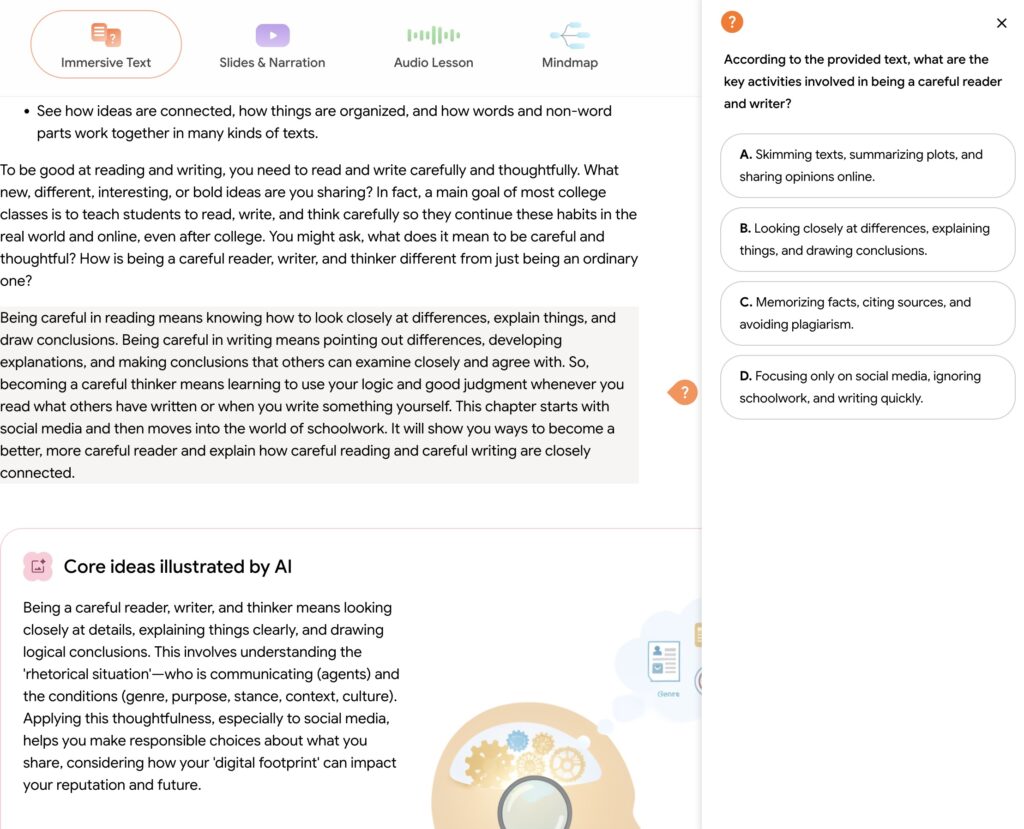

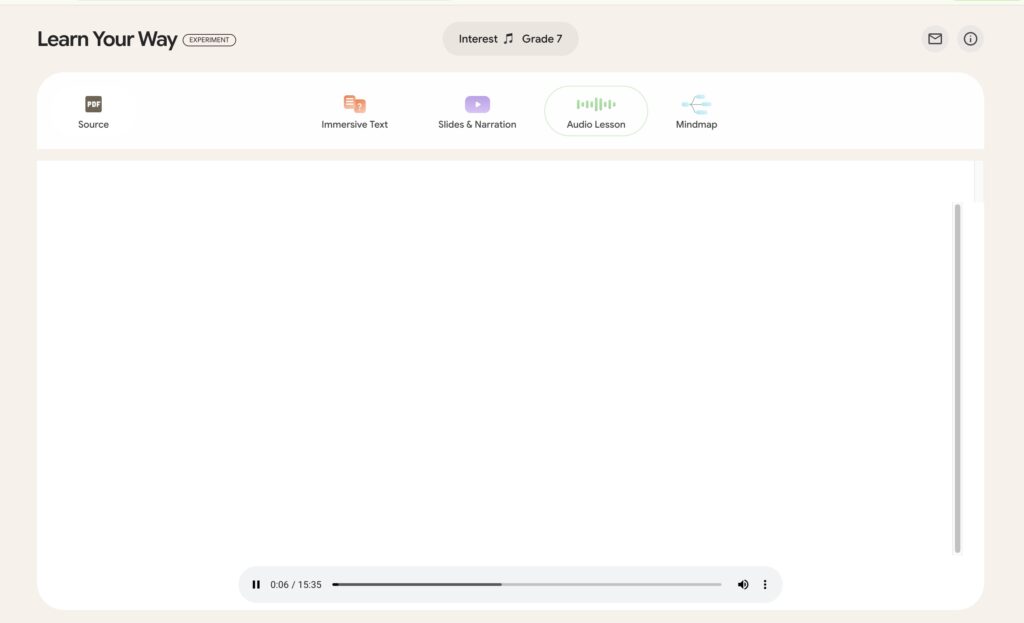

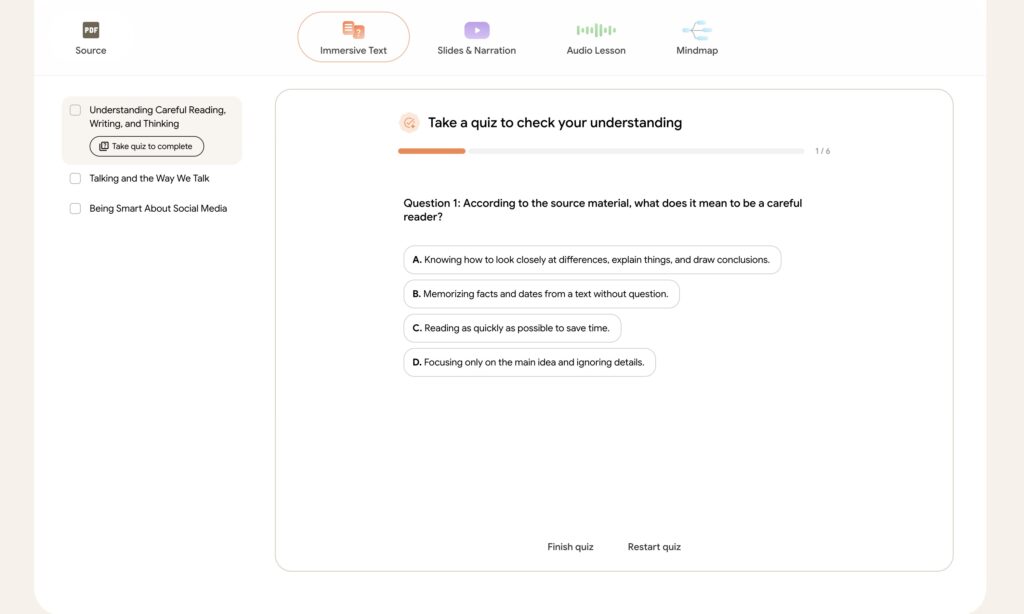

Your brain forms stronger connections when it sees the same idea in different ways. Learn Your Way uses that intentionally.
Inside the main “immersive text” view you also get quizzes, embedded questions, small checks, timelines, mnemonics, and visuals.
Each piece nudges the student to think. not just read. And every part is personalized from the root text.
The results are not just theoretical
Google ran a controlled study with real students. Same chapter. same assessments. two diferent groups.
One group used a standard digital textbook viewer. The other used Learn Your Way.
The personalized group scored higher on the immediate test and the retention test three days later.
Both differences were statistically significant.
Every single student in the personalized group also said they felt more comfortable taking the assessment. That level of confidence shift rarely happens in education.
This tells you something.
Students finally felt the material was written for them.
This is the start of a new category
You will see these tools everywhere over the next two years. Not because it’s trendy.
Because the old model never made sense.
Generic learning was always a bottleneck. AI makes that bottleneck unnecessary.
If you work in education. product. or content. the question isn’t whether to adapt. It’s how fast you can build learning that adjusts to the individual. We’re already seeing companies move in this direction.
Firsts Languages. Then Math. Now full textbooks.
The next wave will mix personalization with gamification.
Real time feedback. Adaptive paths. Emotional engagement.
Its main feature “Upload your PDF” is still on the way (you can apply for early access if you fill one form) but once the tool becomes even more customisable, it will be even more useful and customisable.
